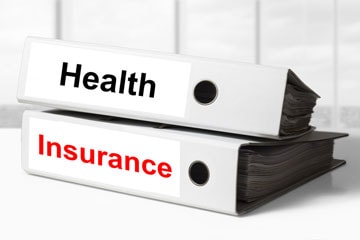The Department of Financial Services (DFS) Superintendent Maria T. Vullohas announced the 2018 health insurance rates for New York’s individual and small group markets, including the rates for the NY State of Health, NY’s official health plan market place. The DFS has reduced the rate increases insurers requested for 2018 by more than 3.8%. This will save policy holders more than $59 million. Health insurance plans need to be robust and effective if these programs are to be really beneficial. These plans are designed for the welfare of the public, though many people commit fraud to secure insurance benefits for which they are not eligible. This is what makes medical claims review a very important requirement with regard to controlling medical costs. It provides protection against overcharges, medical billing errors, and other issues with health claims processing. It helps to reduce waste in health expenditure and provide comprehensive fraud protection.
Now, let us consider the new health insurance rates announced for the State of New York, and their impact.
- The overall average cost of coverage in 2018 for individuals who buy the lowest cost silver level plans will reduce by around 5% compared to 2017 rates, when federal tax credits are applied.
- Rate increases requested by insurers for small group plans for 2018 has been reduced by 2.4%, which is expected to save around $166 million for small businesses.
- Small group plans have more than one million New Yorkers as enrolees. Since the introduction of the ACA, New York has reduced the uninsured rate in half. Rates for individual coverage are 55% lower than they would have been without the Affordable Care Act, after adjusting for inflation and not including federal tax credits.
The Financial Services Superintendent observed that New York’s healthcare market continues to be healthy; there are 15 plans offering individual coverage and 20 plans providing small group coverage. Consumers in every county have a choice of coverage. The cost of coverage will in fact decrease by around 5% for those purchasing the lowest cost silver plans on the NY State of Health Marketplace, with tax credits for eligible New Yorkers. Consumers will be assisted by thousands of NY State of Health Assistors in choosing the best value insurance.
The Department highlighted the reasons for premium increases made by some insurers.
- Some insurers have raised rates to make up for the uncertainty prevailing with regard to the ACA.
- Another reason for the increase in premiums is the reluctance shown by younger and healthier individuals to purchase insurance coverage consequent to the destabilization of the market.
- Moreover, the open enrolment period for individuals to sign up for coverage is shortened by a full 6 weeks via a new federal regulation of the HHS (Department of Health and Human Services). This is likely to lead to reduced enrolment by healthy individuals who are vital in the risk pool to keep premiums down.
- In addition, Congress defunded the ACA’s Risk Corridor program that would have limited insurers’ potential for losses as the ACA was implemented.
Medical costs continue to be the main reason for increase in premium rates, and this is a nationwide trend. For the 2018 individual rates announced for New York,
- The largest share of all medical expenses is that of drug costs – 26%; specialty drug costs increasing by around 49%.
- In-patient hospital costs comprise the second largest share of medical expenses at 19%.
- Physician specialty services come next at 12%.
- Diagnostic testing/lab/x-ray account for 10% of medical expenditure.
The DFA hopes to address the problem of increasing medical expenses with effective programmes such as legislation to authorize the Drug Utilization Review Board to examine expensive drugs for their appropriate value to be applicable to commercial health insurance, in addition to Medicaid. Another plan is to obtain legislative approval that will provide DFS with the authority to ensure necessary regulatory oversight of pharmacy benefit managers, which could help control the rising drug spending.
- In June 2017, Governor Cuomo directed DFS to issue new emergency regulations that mandated health insurance providers not to discriminate against New Yorkers with pre-existing conditions, or based on gender or age. These regulations would also safeguard the 10 categories of essential health benefits guaranteed by the Affordable Care Act.
- In early 2017, the DFS took action to make sure that all medically necessary abortions are covered by health insurance policies without cost sharing. In addition, contraceptives had to be made available to women with no co-pays or deductibles in amounts exceeding one month’s supply at a time.
- An executive order from the Governor banned all insurers who withdrew from offering Qualified Health Plans on the NY State of Health Marketplace from future participation in any program that interacts with the Marketplace such as Medicaid, Child Health Plus, and the Essential Plan.
- The executive order directed state authorities and agencies to ban insurers who withdrew from the NY State of Health Marketplace from contracting within the state. All measures should be taken to protect New Yorkers’ access to quality healthcare.
DFA authorities say that they are taking appropriate measures to counter these destabilizing actions with a view to protecting consumers and helping to steady New York’s health insurance market. They feel that the federal government should act to protect the insurance markets and healthcare coverage of consumers by fully paying the cost-sharing subsidies to insurers, addressing the cost drivers of healthcare including the continuously increasing pharmaceutical costs, and enforcing the individual mandate. They assured that New York will continue its efforts to further strengthen their markets and ensure comprehensive, affordable healthcare insurance choice to all New Yorkers.
What does the insurance sector have to say? Paul Macielak, president and CEO of the state Health Plan Association observed that increasing healthcare taxes add to the costs of health care. He pointed out that 3% of the increase in 2018 premiums is caused by the expected resumption of the ACA’s health insurance tax with no sign on the part of the government to delay or repeal that tax. Apart from this, New York’s Health Care Reform Act (HCRA) imposes surcharges and assessments on health care that come to $5 billion annually. He feels that the government should not continue to tax health insurance so as to subsidize other government spending.



